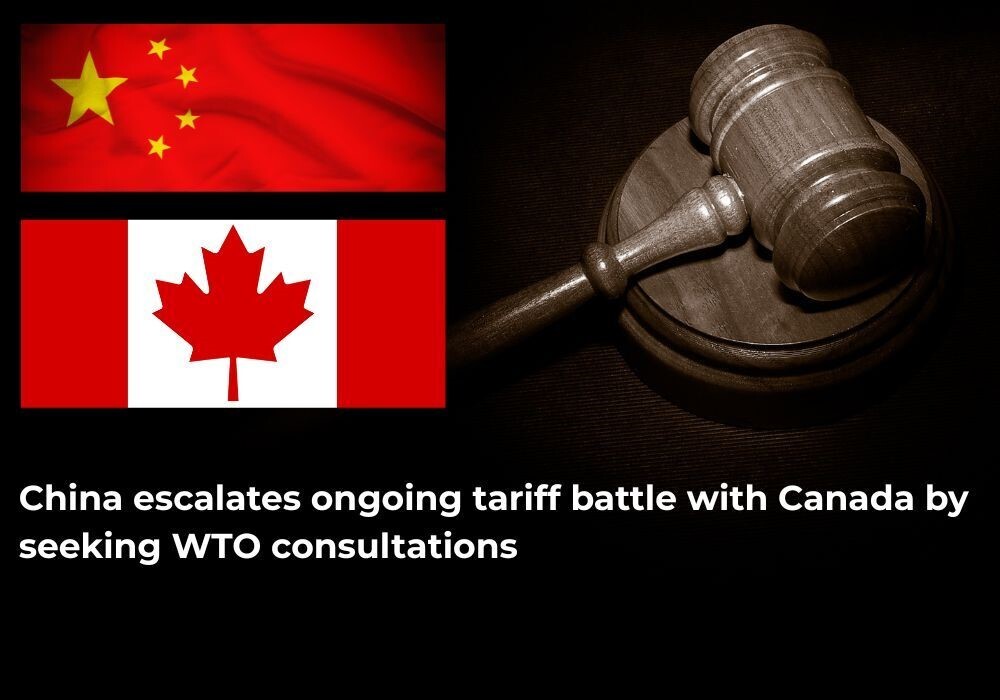

China has formally sought dispute consultations at the World Trade Organization (WTO) over Canada's surtaxes and quotas on aluminium and steel products, the WTO announced on Wednesday, August 20.

According to the WTO notice, the contested measures include a surtax applied through tariff-rate quotas (TRQs) on certain steel imports from non-free trade agreement (FTA) partners, including China. Beijing is also challenging a surtax imposed on goods containing steel or aluminium of Chinese origin.
"We will not hesitate to act when our industries are threatened by unfair practices. These measures are a direct response to China's overcapacity and non-market behaviour, which are undermining Canada's steel sector and threatening Canadian jobs," said Huzaif Qaisar, a spokesman for Trade Minister Maninder Sidhu.
A throwback to the ongoing trade tension between Canada & China
This dispute can be traced back to a series of measures introduced by the Government of Canada (Ottawa) earlier this year.
On June 27, 2025, Canada rolled out tariff rate quotas (TRQs) on steel mill products imported from countries without an FTA, and extended them on August 1, 2025, to countries with FTAs (excluding the United States and Mexico).
Under this system, once imports exceed the designated thresholds in five steel product categories, they face a steep 50 per cent surtax, applied broadly to all suppliers except the US and Mexico.
Also Read: Tariff tensions rise as Canada-US trade deal remains uncertain
Just days later, on July 31, 2025, the federal government escalated its measures by imposing a 25 per cent surtax on steel melted and poured in China, as well as aluminium smelted and cast in China.
The aluminium restrictions stretched across a wide range of products, including:
Goods were deemed of Chinese origin if the largest, or second-largest, volume of primary aluminium in them had been produced in China, or if the aluminium had last been melted into liquid form and cast into a solid state there.
Together, these overlapping tariffs and quotas have set the stage for a deepening trade rift.
For the Government of Canada, the measures are about protecting domestic producers from what it views as unfair competition. For Beijing, they represent a violation of global trade rules. With the matter now before the WTO, the dispute underscores not only the fragile state of Canada and China's trade relations but also the growing fault lines in global steel and aluminium markets.
For live market update from industry experts, watch our upcoming webinar
Responses








